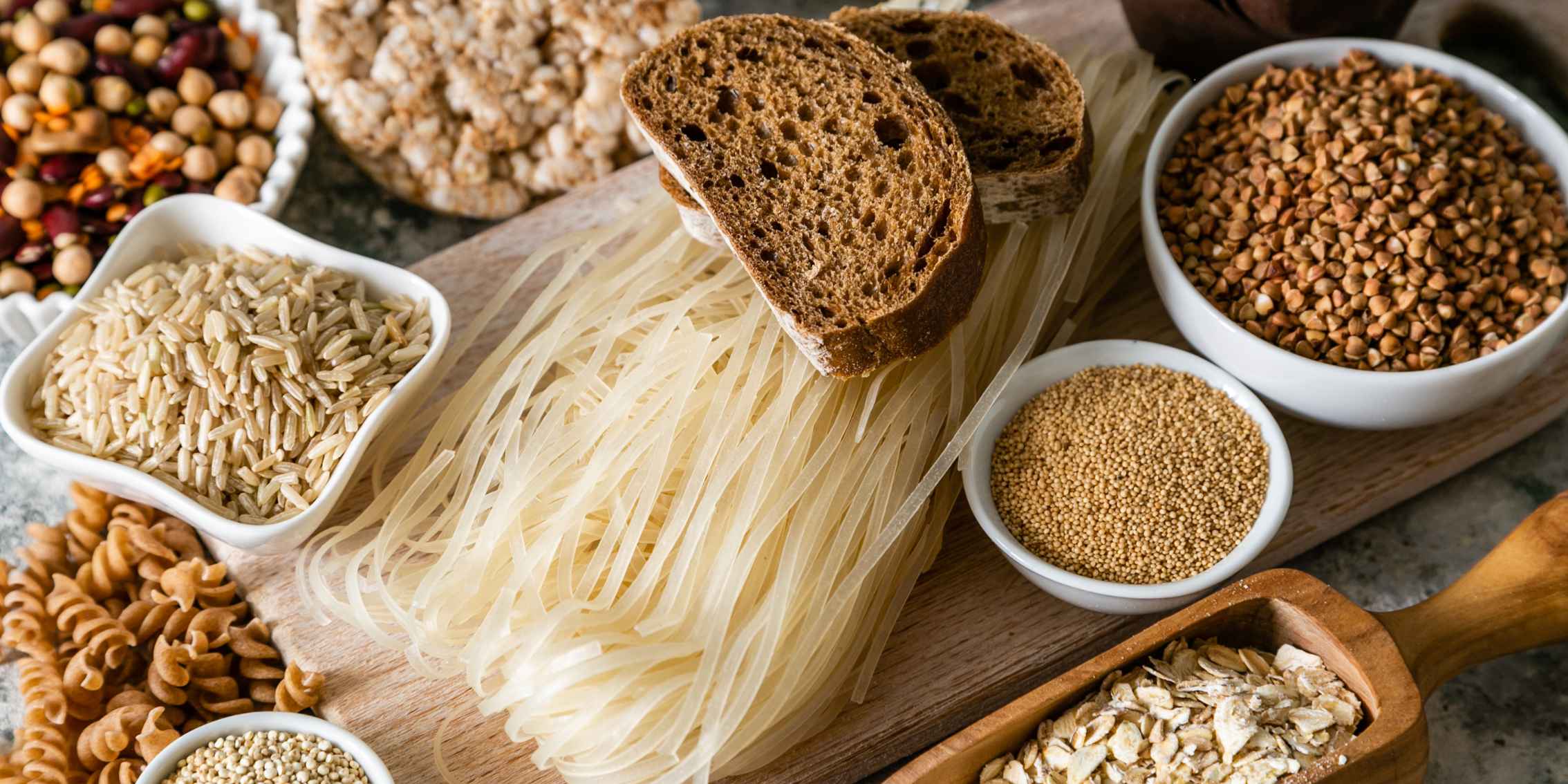Everyone is still talking about the keto diet. From podcasts to the blogosphere and even your local coffeeshop, it remains the common answer to weight loss and energy levels.
But is it really a magic bullet? Current research paints a more nuanced picture, posing questions around nutrition, longevity, and even health risks.
This keto diet guide shares the latest research in simple, accessible terms. Expect to learn how the diet really works, the truth about its benefits and potential risks, and ultimately, get an evidence-based roadmap to ketosis for beginners and experts alike.
Despite all the technical talk surrounding it, the ketogenic diet has a surprisingly simple definition. It's a very low-carb, high-fat, and moderate-protein eating plan. The goal is to drastically limit your carbohydrate intake to force your body into a unique metabolic state known as ketosis.
Normally, your body's preferred fuel source is glucose, which comes from the carbohydrates you eat. When you severely restrict carbs, your body has no choice but to find an alternative fuel.
It turns to stored fat, breaking it down into molecules called ketones. These ketones then become your body's new primary fuel source, powering everything from your muscles to your brain. It's essentially a metabolic shift from a sugar-burning to a fat-burning state.
Wondering how to start keto and transition into that fat-burning state? The process is best approached using these simple, manageable steps.
The first and most critical step is to drastically reduce your daily carbohydrate intake. Most people aim for 20–50 grams of net carbs per day. This means eliminating grains, sugar, starchy vegetables, and most fruits. Instead, focus on low-carb vegetables like leafy greens, broccoli, and cauliflower.

Once you've cut carbs, healthy fats will become your new primary fuel source. Aim for fats to make up 60–75% of your food intake. Prioritise high-quality sources like avocados, olive oil, nuts, seeds, fatty fish, and grass-fed meats. Remember, use fats for flavour and satiety rather than over-consuming them just for the sake of hitting a macro goal.
While keto is a high-fat diet, it is not a high-protein one. Keeping protein intake moderate (around 20–35% of daily calories, or roughly 70 grams per day for most people) is key. Consuming too much protein can cause it to be converted into glucose, which can kick you out of ketosis.

Signs that you are in ketosis often include reduced appetite, weight loss, and improved energy and focus. Consistency is key. Avoiding "cheat days" is crucial, because a single high-carb meal can interrupt the metabolic state you've worked so hard to achieve.
A randomised clinical trial published in Nutrition & Metabolism found that a low-carbohydrate ketogenic diet led to significant improvements in blood sugar control for people with type 2 diabetes. Participants not only saw greater reductions in key blood sugar markers (like HbA1c) but were also able to reduce their need for diabetes medication.
An intriguing 2023 study focused on people with mild cognitive impairment. Researchers found that those who used a ketogenic intervention showed significant improvements in cognitive tests and processing speed. This suggests that when the brain uses ketones as its primary fuel source instead of glucose, it may operate more efficiently, leading to enhanced memory and overall brain function.
While inflammation is a natural process, chronic inflammation is linked to many health issues. A 2024 review of studies found that the ketogenic diet can significantly reduce key markers of inflammation in the body. The effects were found to be particularly notable in participants with obesity, suggesting a link between metabolic health and the diet's anti-inflammatory benefits.
For many people, weight loss is the main reason they try the keto diet, and for good reason. A major one-year study found that participants on a keto diet achieved an average weight loss of approximately 13.8 kg (30 pounds). The research highlighted the diet’s strong potential for significant and sustainable weight loss.

A 2023 study published in Nutrients found that ketogenic diets are associated with significant reductions in intake of key micronutrients like magnesium, calcium, iron, vitamin B1 (thiamine), and folate, mainly because whole grains, fruits, and legumes are reduced or excluded. Research highlights the need for careful monitoring and supplementation to prevent deficiencies.
A 2020 study analysed 448 posts from 300 users across 43 online forums, finding that approximately one-third of keto diet followers report experiencing "keto flu." It’s characterised by flu-like symptoms, including headaches, fatigue, nausea, dizziness, brain fog, and gastrointestinal discomfort, often starting within days of carb restriction, peaking in the first week, and usually resolving within four weeks with proper hydration and electrolyte management.
The best way to manage the keto flu is by staying well-hydrated and replenishing your electrolytes. Also, you should ease into the diet gradually, get plenty of rest, and ensure you're consuming enough healthy fats to support your energy levels.
A comprehensive 2024 review published in Frontiers in Nutrition analysed over 100 studies, concluding that long-term adherence to the ketogenic diet is linked to increased risks of heart disease. This is due to elevated LDL cholesterol, kidney stress, nutrient deficiencies, and increased risk of certain cancers and Alzheimer’s, particularly when the diet is high in red and processed meats and low in nutrient-rich plant foods. The authors advise caution and suggest that intermittent keto cycles could mitigate some of these risks.
Your meal structure should prioritise your macronutrient ratios. Aim for 60–75% of your calories from healthy fats, 20–30% from protein, and 5–10% from carbohydrates. This balance is crucial for maintaining ketosis and should be the foundation of every meal you prepare.
When building your plate, start with a moderate portion of protein to satisfy your hunger and support muscle mass. Next, add a generous serving of fibre-rich, non-starchy vegetables to ensure you get adequate micronutrients and to help keep you full.
Because the keto diet can be restrictive, it's vital to incorporate a wide variety of keto-friendly foods. Regularly including different types of healthy fats, proteins, and low-carb vegetables helps you get a complete range of essential vitamins and minerals, reducing the risk of nutrient deficiencies.
Choose whole, nutrient-dense foods with minimal processing. Prioritise ingredients like avocados, leafy greens, fatty fish, and nuts will not only maximise your health benefits but also make the diet easier to follow and more satisfying.
It's common for beginners to find success with 2–3 meals per day, with optional low-carb snacks as needed. Focusing on satiety from healthy fats often reduces the need to eat as frequently, which can naturally lead to a more mindful eating schedule.
The ketogenic diet is a powerful metabolic tool that offers proven benefits like weight loss and blood sugar control. However, its popularity as a quick-fix solution often gets in the way of a more nuanced understanding. This guide shows that keto isn't one-size-fits-all. It's a targeted approach that requires careful planning and a mindful transition.
Whether you're looking to apply this knowledge to your own life or support your clients, consider this guide a starting point. To truly master the science behind nutrition and turn your passion into a profession, continue your learning with The Nutrition Institute. Our 12-module course, guided by top professional nutritionists, offers flexible, self-paced study and payment options. Download our course prospectus to learn more.

Tutor at The Nutrition Institute
This article was contributed to by our team of nutrition experts at The Nutrition Institute. Students of our online Nutrition course have the benefits of learning from professional tutors such as Kassandra Kaleda, who has an extensive background in clinical wellness and community Clinical Nutrition.
Published: